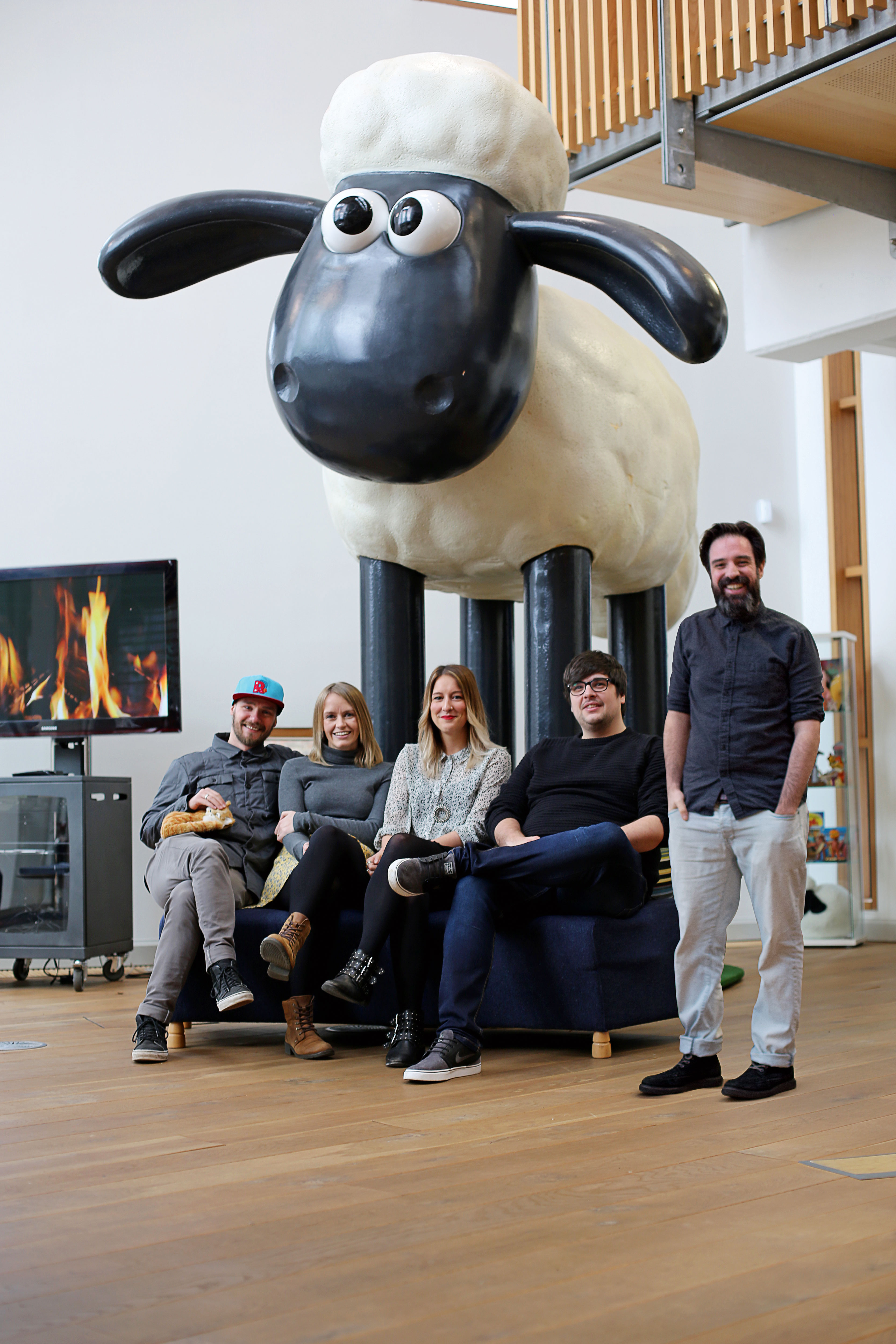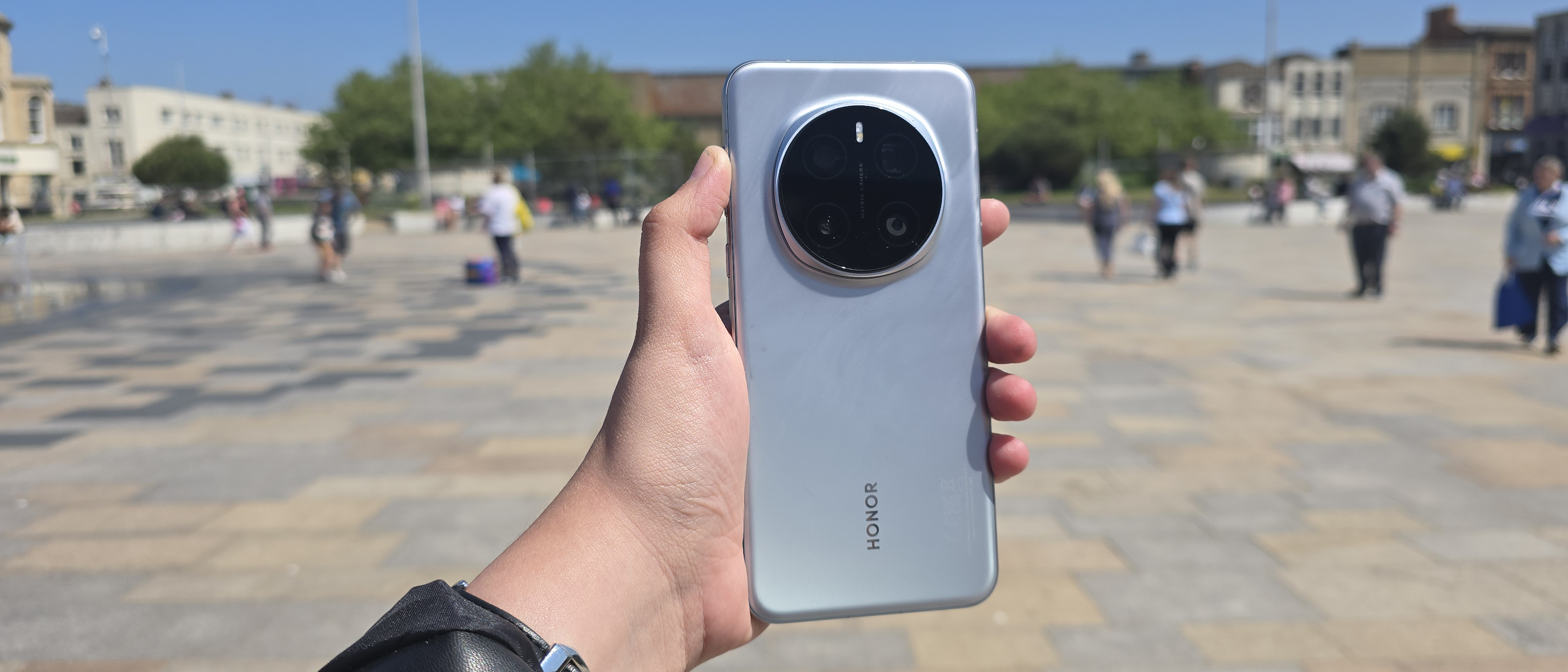How Aardman Animations created a digital-first culture
The famous studio shares how it translates its creative vision.

Almost 30 years ago, Wallace and Gromit went to the moon on a Grand Day Out that would launch Aardman Animations into global fame, and earn the company and its art director Nick Park a place in the hearts of the nation. A string of hits later, and Bristol’s best-loved animation studio is still going strong.
And for the past decade, its interactive department – which was founded off the back of a Channel 4 online animation project, 4mations – has grown in tandem. Aardman Interactive’s first official employee, group creative director Daniel Efergan, shares how it happened…
Did you help build the concept of the department?
There was a seed that started it. A guy, Paul Deane, who now works at the BBC – he’s like the grandfather of interactive – pulled us all together around the 4mations project. We delivered it, and then it was like, ‘Okay, if we’re going to keep doing this, what should we be?’
Even that didn’t go quickly. It felt like a startup company in the middle of Aardman; we were just surviving for the first year.
Did you get much support from the rest of the Aardman network?
Everyone was supportive, but one of our journeys was helping everyone understand what interactivity means, and the potential of it.
Ten years ago, we were marketers. There wasn’t a structured funding model, or ways to make money outside of being a form of advertising for other stuff. As the industry has grown up, we have grown up with it to transfer into a tangible product that has value in itself.
How do you develop a strategy for a project?
For us, it’s always about the idea. We try and ensure that the love and care and passion comes with it, so we fight against splitting apart the idea creators and the people that produce the project. Over time, you end up with people over here going, ‘Oh, I’ve got this great idea,’ and throwing it over this virtual fence to a load of production people, who are then like, ‘I’ve got to make this, and I don’t necessarily love it.’
Get the Creative Bloq Newsletter
Daily design news, reviews, how-tos and more, as picked by the editors.
So we make sure that the creative directors and the producers really care about what they’re doing. Pitch it, believe in it and deliver it all the way through to the end. The idea itself depends on a project-by-project basis. We are very hand-built, which suits the culture of Aardman.
We don’t tend to lean on technical engines or previously supplied processes over and over again, potentially against our own benefits of efficiency, but it means we consider each individual idea as its own thing. Sometimes that means getting lots of people in a room and shaving ideas off everyone’s heads to work out what the best thing is.
Sometimes it involves two people sat in a quiet, dark room by themselves, talking through something until you get the right thing. Sometimes if it’s more open, we’ll ask lots of people to come up with ideas, then fan the flames of the ones that seem most interesting, and then we’ll try to get the person that believes in that idea to become the leader of it.
How do you maintain such a passionate and driven team?
Trying to keep our team enthralled and excited is something I hope we do quite well. Part of that is establishing a culture for people to step into, which sets up how you feel as you walk in the door in the morning, and that’s quite complex.
I have experienced cultures that feel great, and then can pop so quickly. One of my biggest jobs is spending time to get the most out of people, and that’s a lot to do with setting up a correct culture. Choosing people to bring into it is the second part, and that’s hard to get right.
In all honesty, I am useless in job interviews. I think people will be a certain way, and after 10 years I’m always wrong. So, I lean on other people’s insights. We bring people in, work out their skills and whether they can do the job, and then bring them back in to work out what they’re like, and if they will fit into the culture.
You used to be a programming lecturer. Any advice for designers who want to learn coding?
First, you need to understand what we mean by programming. There’s the sort where you type commands into a blank text file, and for a visually-led person it can be really bloody frustrating when because it’s a comma rather than a semi-colon, the whole thing doesn’t work.
But before any of that is understanding algorithmic thinking. Breaking down problems in a way that a computer would think about it. That skillset – thinking about how things can be constructed in that way – is most important, because it allows you to design in a way that translates nicely into programmatic systems.
Do designers from a more traditional background struggle with that?
Sometimes trying to get people to think in that way is a skill, but you’ve got different kinds of minds. I’ve found my creative directors fall into one of two types. The metaphor I use to communicate this, both to clients and myself, is the puppets that we have here at Aardman.
There is usually a metal skeleton underneath, and then there’s the flesh – the plasticine – that makes it look like what it is. For an interactive project to work, you need an inner structure that is quite programmatic and pragmatic in the way it’s constructed, and then you need the flesh, the character and the way it looks to the world.
Some creative directors see the outside and go, ‘I really want it to feel like that’, then work out what skeleton they need to hold it together. Some see straight through to the skeleton, then work out how to colour it in later. Both get to the same end result, but they approach it differently.
Which one are you?
I’m the skeleton. I see patterns and structures and interconnecting ways that things work, then translate them into the way people feel.
What advice would you give a smaller digital agency?
It’s about caring. Find something you desperately want to bring into the world, and do that. Now, that and money is where sometimes the conflicts come. Most people don’t pay you just to do things for yourself, but trying to juggle that line so that the things you’re making, you really, really want to exist – that’s what makes you passionate and successful, and should see you through.
This article was originally published in issue 278 of Computer Arts, the world's best-selling design magazine. Buy issue 278 here or subscribe to Computer Arts here.
Related articles:

Thank you for reading 5 articles this month* Join now for unlimited access
Enjoy your first month for just £1 / $1 / €1
*Read 5 free articles per month without a subscription

Join now for unlimited access
Try first month for just £1 / $1 / €1

Nick has worked with world-class agencies including Wolff Olins, Taxi Studio and Vault49 on brand storytelling, tone of voice and verbal strategy for global brands such as Virgin, TikTok, and Bite Back 2030. Nick launched the Brand Impact Awards in 2013 while editor of Computer Arts, and remains chair of judges. He's written for Creative Bloq on design and branding matters since the site's launch.
